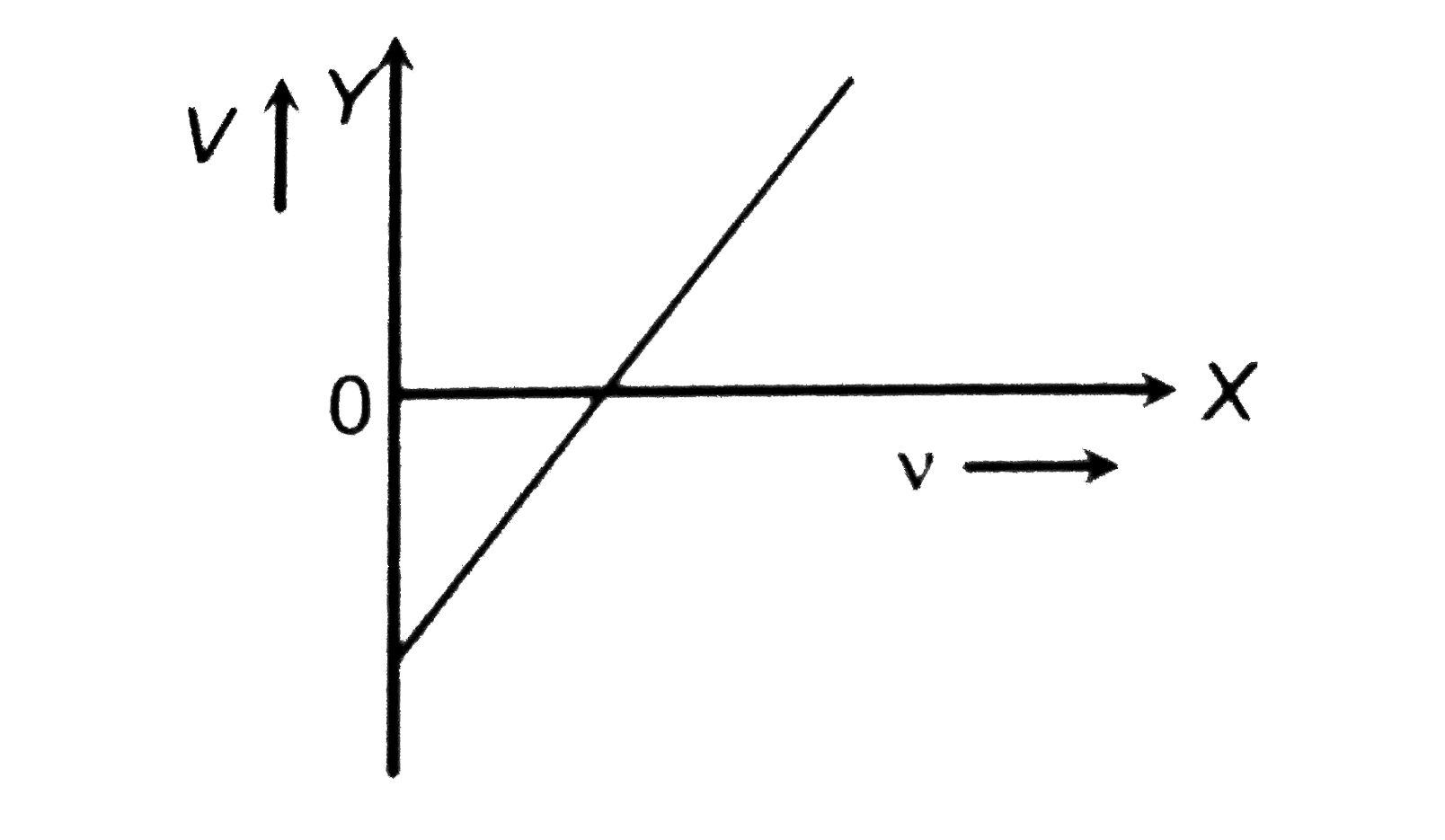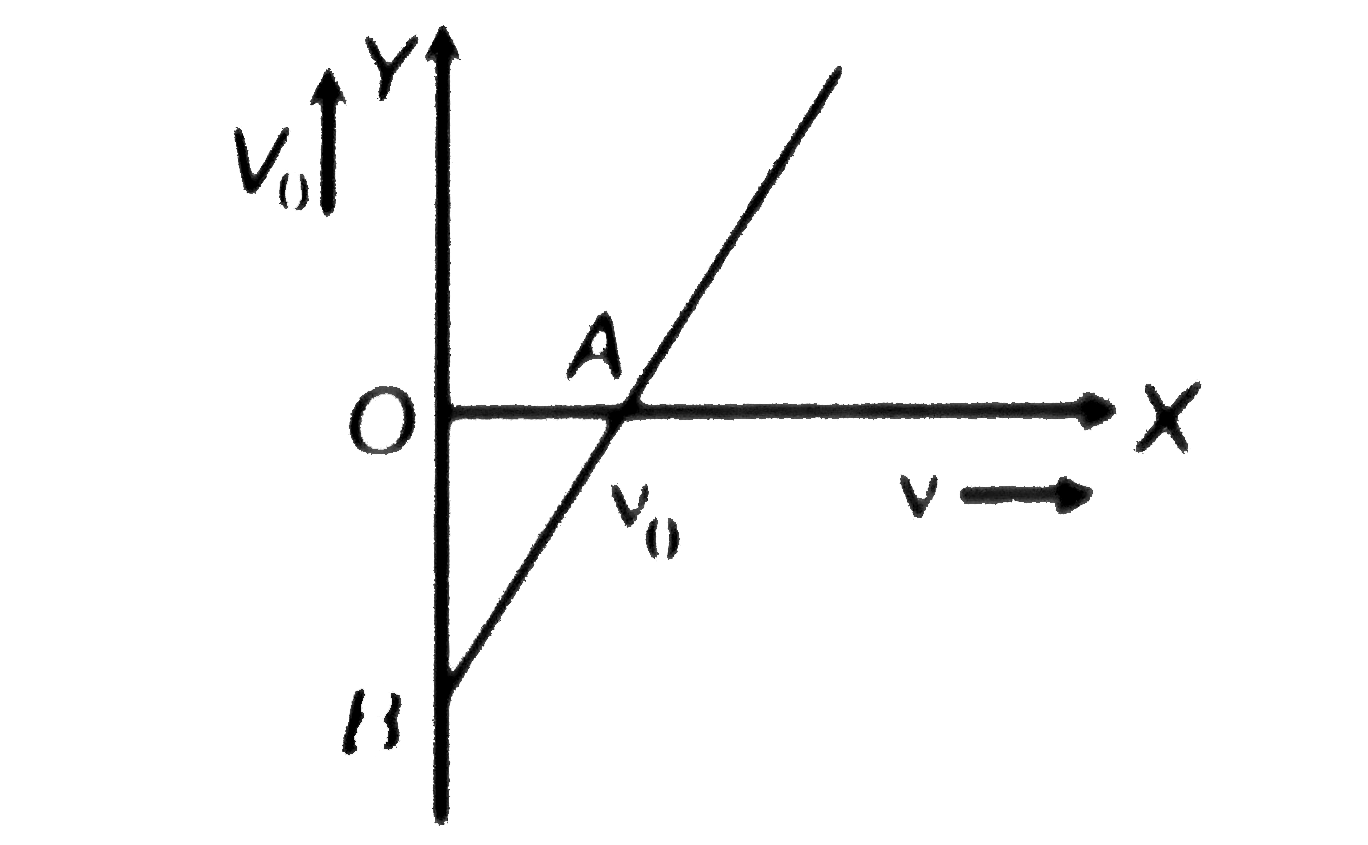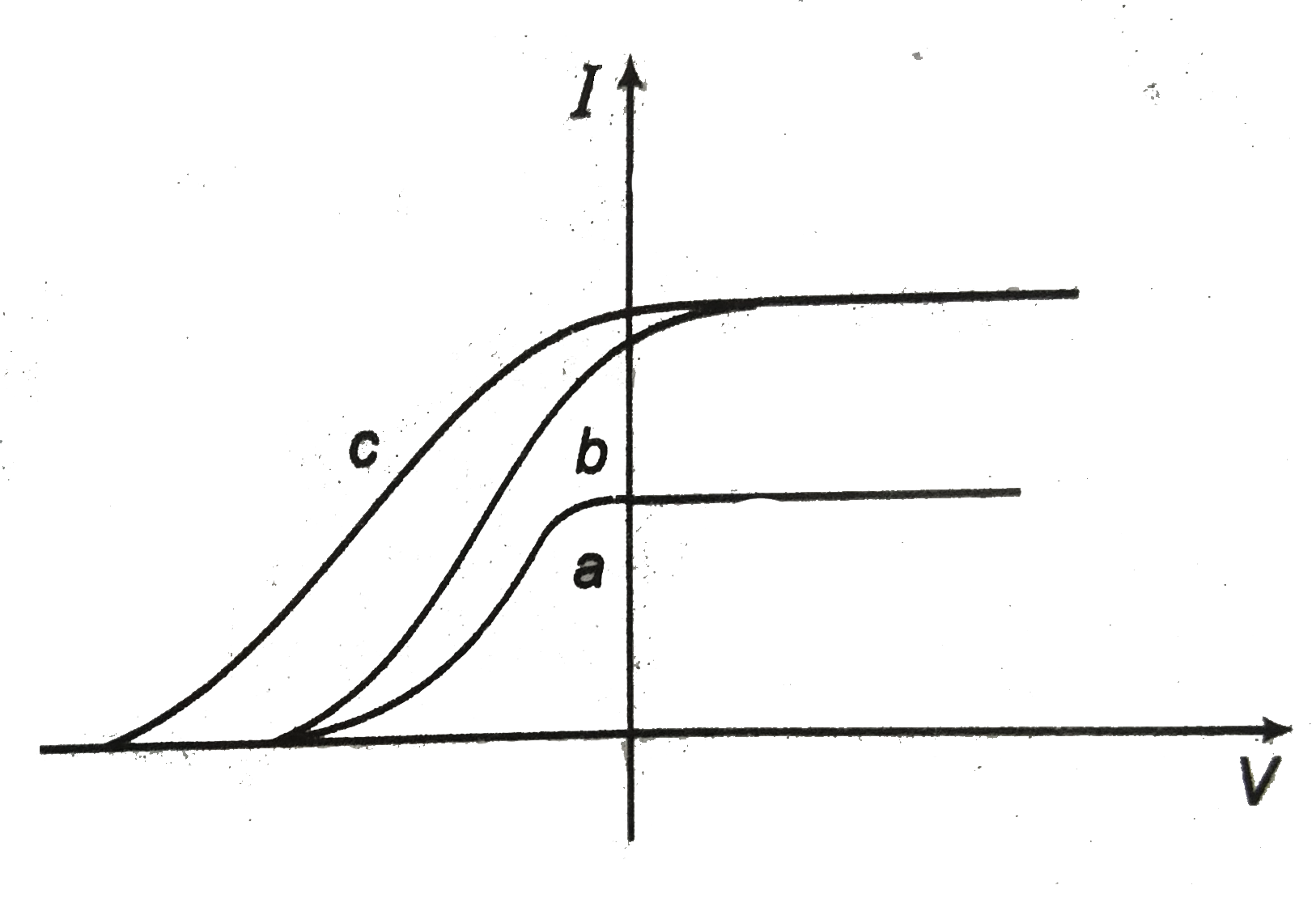Complete Solutions to Photo Electric Effect of chapter DUAL NATURE OF RADIATION AND MATTER of Class 12 book with complete answers and questions
| Class 12 | PHYSICS |
| Chapter | DUAL NATURE OF RADIATION AND MATTER |
| A2Z | Photo Electric Effect |
| Number Of Questions | 61 |
| Academic Year | 2023-24 |
The number of photo - electrons emitted per second from a metal surface increases when
02:57View SolutionAs the intensity of incident light increases
02:24View SolutionKinetic energy with which the electrons are emitted from the metal surface due to photoelectric effect is
03:29View SolutionThe work function of aluminium is `4.2 eV`. If two photons , each of energy `3.5 eV` strike an electron of aluminium , then emission of electrons will be
02:02View SolutionIn photoelectric effect if the intensity of light is doubled then maximum kinetic energy of photoelectrons will become
02:04View SolutionThe cathode of a photoelectric cell is changed such that the work function changes from `(W_(1) to W_(2) (W_(2) gt W_(1))`. If the current before and after change are `I_(1)` and `I_(2)`, all other conditions remaining unchanged , then (assuming `hv gt W_(2)`)
02:29View SolutionA beam of light of wavelength `lambda` and with illumination `L` falls on a clean surface of sodium . If `N` photoelectrons are emitted each with kinetic energy `E` , then
02:37View SolutionWhich of the following statements is correct ?
03:35View SolutionThe stopping potential `(V_(0))`
03:00View SolutionIf intensity of incident light is increased in photo electric effect then which of the following is true ?
02:36View SolutionThe retarding potential for having zero photo - electron current
03:44View SolutionA photo cell is receiving light from a source placed at a distance of `1 m`. If the same source is to be placed at a distance of `2 m` , then the ejected electron
03:00View SolutionA point source of light is used in an experiment on photoelectric effect . Which of the following curves best represents the variation of photo current (i) with distance (d) of the source from the emitter?
 02:25View Solution
02:25View SolutionA photon energy `3.4 eV` is incident on a metal having work function `2 eV`. The maximum `K.E.` of photoelectrons is equal to
02:07View SolutionPhotons of energy `6 eV` are incident on a metal surface whose work function is `4 eV`. The minimum kinetic energy of the emitted photo - electrons will be
02:58View SolutionA metal surface of work function `1.07 eV` is irradiated with light of wavelength `332 nm`. The retarding potential required to stop the escape of photo - electrons is
03:34View SolutionWhen light falls on a metal surface , the maximum kinetic energy of the emitted photo - electrons depends upon
01:30View SolutionThe work function of metal is `1 eV`. Light of wavelength `3000 Å` is incident on this metal surface . The velocity of emitted photo - electrons will be
03:01View SolutionThreshold frequency for a metal is `10^(15) Hz`. Light of `lambda = 4000 Å` falls on its surface . Which of the following statements is correct ?
02:52View SolutionIf in a photoelectric experiment , the wavelength of incident radiation is reduced from `6000 Å to 4000 Å` then
02:31View SolutionThe photoelectric work function for a metal surface is `4.125 eV`. The cut - off wavelength for this surface is
01:18View SolutionAccording to Einstein's photoelectric equation, the graph between the kinetic energy of photoelectrons ejected and the frequency of incident radiation is
01:39View SolutionThe stopping potential `V` for photoelectric emission from a metal surface is plotted along Y - axis and frequency `v` of incident light along X - axis . A straight line is obtained as shown . Planck's constant is given by
 01:07View Solution
01:07View SolutionIn an experiment on photoelectric effect the frequency `f` of the incident light is plotted against the stopping potential `V_(0)`. The work function of the metal is given by ( e is the electronic charge)
 01:36View Solution
01:36View SolutionThe work function of a metal is `1.6 xx 10^(-19) J`. When the metal surface is illuminated by the light of wavelength `6400 Å`, then the maximum kinetic energy of emitted photo - electrons will be
(Planck's constant `h = 6.4 xx 10^(-34) Js`)02:35View SolutionUltraviolet radiation of 6.2 eV falls on an aluminium surface (work - function = 4.2 eV). The kinetic energy in joule of the fastest electrons emitted is
01:06View SolutionThe work function for tungsten and sodium are `4.5 eV` and `2.3 eV` respectively . If the threshold wavelength `lambda` for sodium is `5460 Å`, the value of `lambda` for tungsten is
01:33View SolutionThe work function of a metallic surface is `5.01 eV`. The photo - electrons are emitted when light of wavelength `2000 Å` falls on it . The potential difference applied to stop the fastest photo - electrons is `[ h = 4.14 xx 10^(-15) eV sec]`
03:08View SolutionLight of wavelength `4000 Å` falls on a photosensitive metal and a negative `2 V` potential stops the emitted electrons. The work function of the material ( in eV) is approximately `( h = 6.6 xx 10^(-34) Js , e = 1.6 xx 10^(-19) C , c = 3 xx 10^(8) ms^(-1))`
02:30View SolutionWhen yellow light is incident on a surface , no electrons are emitted while green light can emit. If red light is incident on the surface , then
01:58View SolutionThe photoelectric threshold of a certain metal is `3000A`. If the radiation of `2000A` is incident on the metal
01:31View SolutionA photocell stoops emission if it is maintained at `2 V` negative potential . The energy of most energetic photoelectron is
01:25View SolutionAssuming photoemission to take place , the factor by which the maximum velocity of the emitted photoelectrons changes when the wavelength of the incident radiation is increased four times , is
02:24View SolutionWhen a point source of light is at a distance of one metre from a photo cell , the cut off voltage is found to be `V`. If the same source is placed at `2 m` distance from photo cell , the cut off voltage will be
02:40View SolutionIf the work function of a metal is `'phi'` and the frequency of the incident light is `'v'`, there is no emission of photoelectron if
01:10View SolutionLight of wavelength `lambda` strikes a photo - sensitive surface and electrons are ejected with kinetic energy is to be increased to `2 E` , the wavelength must be changed to `lambda'` where
03:04View SolutionLight of wavelength `5000 Å` falls on a sensitive plate with photoelectric work function of `1.9 eV`. The kinetic energy of the photoelectron emitted will be
01:43View SolutionIf the work function of a photo - metal is `6.825 eV`. Its threshold wavelength will be `( c = 3 xx 10^(8) m//s)`
02:28View SolutionWork function of a metal is `2.1 eV`. Which of the waves of the following wavelengths will be able to emit photoelectrons from its surface ?
01:51View SolutionThe frequency of incident light falling on a photosensitive metal plate is doubled, the K.E of the emitted photo-electrons is
01:59View SolutionWhen light of wavelength `300 nm` (nanometre) falls on a photoelectric emitter , however light of `600 nm` wavelength is sufficient for creating photoemission . What is the ratio of the work functions of the two emitters ?
01:15View SolutionThreshold wavelength for photoelectric effect on sodium is `5000 Å` . Its work function is
01:30View SolutionWhat is the stopping potential when the metal with work function `0.6 eV` is illuminated with the light of `2 eV` ?
01:48View SolutionThe work functions for sodium and copper are `2 eV` and `4 eV` . Which of them is suitable for a photocell with `4000 Å` light ?
03:06View SolutionFor intensity `I` of a light of wavelength `5000 Å` the photoelectron saturation current is `0.40 mu A` and stopping potential is `1.36 V` , the work function of metal is
02:57View SolutionLight of frequency `8 xx 10^(15) Hz` is incident on a substance of photoelectric work function `6.125 eV`. The maximum kinetic energy of the emitted photoelectrons is
02:14View SolutionThe lowest frequency of light that will cause the emission of photoelectrons from the surface of a metal ( for which work function is `1.65 eV`) will be
01:48View SolutionLights of two different frequencies whose photons have energies 1 and 2.5 eV, respectively, successively illuminate a metal whose work function is 0.5 eV. The ratio of the maximum speeds of the emitted electrons
01:38View SolutionSodium and copper have work functions `2.3 eV and 4.5 eV` respectively . Then the ratio of the wavelength is nearest
02:44View SolutionWhen radiation is incident on a photoelectron emitter, the stopping potential is found to be 9 volts . If `e//m` for the electrons is `1.8 xx 10^(11) C kg^(-1)` the maximum velocity of the ejected electrons is
02:39View SolutionLight of frequency `4 v_(0)` is incident on the metal of the threshold frequency `v_(0)`. The maximum kinetic energy of the emitted photoelectrons is
01:10View SolutionEnergy required to remove an electron from aluminium surface is `4.2 eV`. If light of wavelength `2000 Å` falls on the surface , the velocity of the fastest electron ejected from the surface will be
02:49View SolutionA photon of energy `8 eV` is incident on a metal surface of threshold frequency `1.6 xx 10^(15) Hz`, then the maximum kinetic energy of photoelectrons emitted is `( h = 6.6 xx 10^(-34) Js)`
01:43View SolutionLight of wavelength `1824 Å`, incident on the surface of a metal , produces photo - electrons with maximum energy `5.3 eV`. When light of wavelength `1216 Å` is used , maximum energy of photoelectrons is `8.7 eV`. The work function of the metal surface is
02:39View SolutionMercury violet `(lambda = 4558 Å)` is falling on a photosensitive material `(phi = 2.5 eV)`. The speed of the ejected electrons is in `ms^(-1)` , about
02:32View SolutionThe work functions of metals `A` and `B` are in the ratio `1 : 2`. If light of frequencies `f` and `2 f` are incident on the surfaces of `A` and `B` respectively , the ratio of the maximum kinetic energy of photoelectrons emitted is ( `f` is greater than threshold frequency of `A , 2f` is greater than threshold frequency of `B`)
02:22View SolutionWhen a metal surface is illuminated by light wavelengths `400 nm` and `250 nm` , the maximum velocities of the photoelectrons ejected are `upsilon` and `2 v` respectively . The work function of the metal is
`( h = "Planck's constant" , c = "velocity of light in air" )`04:03View SolutionWhen radiation of wavelength `lambda ` is incident on a metallic surface , the stopping potential is `4.8 "volts"` . If the same surface is illuminated with radiation of double the wavelength , then the stopping potential becomes `1.6 "volts"`. Then the threshold wavelength for the surface is
02:50View SolutionThe figure shows the variation of photo current with anode potential for a photosensitive surface for three different radiations. Let `I_a`,`I_b`and`I_c` be the intensities and `f_a`,`f_b`and`f_c` be the frequencies for the curves a,b and c respectively
 01:15View Solution
01:15View SolutionThe stopping potential as a function of the frequency of the incident radiation is plotted for two different photoelectric surfaces `A` and `B` . The graphs show that work function of `A` is
 01:50View Solution
01:50View SolutionThe curves `(a) , (b) , ( c )` and `(d)` show the variation between the applied potential difference `(V)` and the photoelectric current `(i)` , at two different intensities of light `(I_(1) gt I_(2))`. In which figure is the correct variation shown ?
03:17View Solution
Photo Electric Effect questions and complete solutions for chapter DUAL NATURE OF RADIATION AND MATTER of A2Z PHYSICS (HINGLISH) of Class 12
